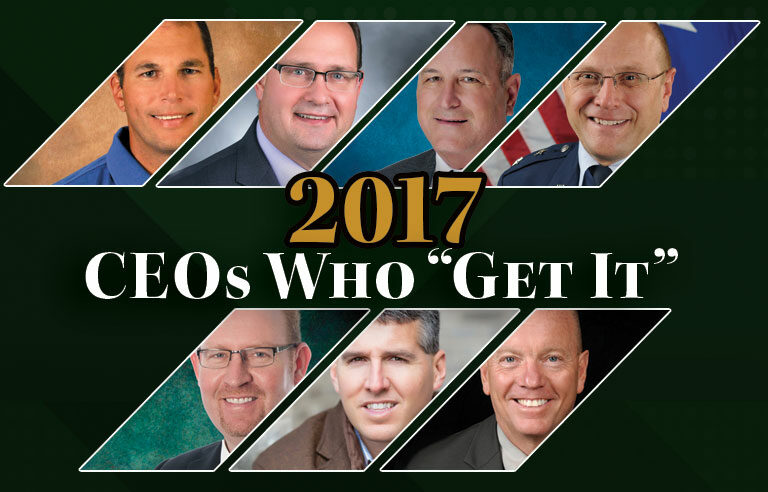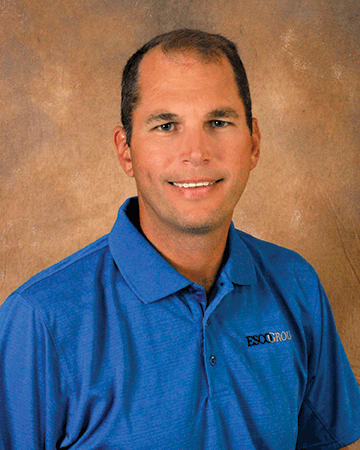The 2017 CEOs Who 'Get It'


Ray Brown
CEO
ESCO Group
Marion, IA
ESCO Group is a versatile company that provides electrical construction, electrical engineering, plant automation, arc flash analysis and electrical safety training services to a wide variety of commercial and industrial clients, primarily within the food and beverage, manufacturing, agriculture, and municipal markets. By empowering people, providing exceptional services and delivering on promises, ESCO, which has 225 employees, is known for responsible and reliable support and excellent, custom-made solutions.
Why is safety a core value at your organization?
At our core, what makes ESCO successful is our people. Empowering people, providing exceptional services and delivering on promises makes up our commitment to our ESCO families. Each day, we strive to keep our promise that every ESCO family member will make it home safely. Without our exceptional electricians, engineers and support groups, what we do in providing services to our markets would be impossible. Our focus must be on our people because they represent everything that ESCO is today, tomorrow and in our years to come.
Describe your personal journey to becoming a CEO who “gets it.” What experiences or lessons brought you to where you are now?
My journey and first experiences began more than 45 years ago being the youngest brother of five boys and learning to have the keen instinct to look out for each other. That family-oriented instinct continues today in my CEO role in that I want to look out for our employees.
I started at ESCO shortly after our founder and CEO at the time, Wayne Engle, was one of the very first in the electrical industry to recognize the impact of safety by hiring our first ESCO safety director. This was unprecedented at the time, and set the stage for ESCO to become the safety learning organization it is today.
In my earlier years, I reported to our second CEO, Dave Engle, who was my mentor for more than 20 years until his passing just a few years ago. Dave had the same commitment to safety as Wayne did. Dave put me in charge of our Risk Management Platform and 15 years ago we made the decision to invest in ourselves in joining a self-insured captive called the Heartland Group. At the time we felt we were an extremely proactive, safety-minded company making a great investment. That turned out to be completely false. What we found out is that our company – although very safety conscious – was simply getting lucky. Unfortunately, that luck ran out with a series of very serious accidents, including shutting down some industrial processes and sadly, losing one of our own family members in an electrocution accident that was completely avoidable. There is not a day that goes by that I do not think of Chris and his family – that constant reminder will always be with me and will influence my decisions regarding safety for our employees.
Since then, we have completely rebuilt our safety leadership, focusing on learning and not complacency. Today, we have empowered three full-time, exceptional safety directors who focus on creating a learning safety environment and who make a difference for ESCO every day. Today, ESCO tracks certifications and training, and we share near misses and best practices. We try to engineer the risk out of task and activities before the task or activity begins. One thing is certain: Accidents will happen, but we can never become complacent. We must always keep learning and we must always look out for one another.
What is the biggest obstacle to safety at your organization, and how do you work to overcome it?
Our biggest safety obstacle is convincing new employees that safety is truly part of the ESCO way. Many new employees come to ESCO with a poor perception of safety due to previous employers making safety promises and commitments, only to throw them out when production demands and client deadline expectations are increased.
ESCO has to continuously prove their commitment to safety to new and existing employees through our actions – whether it’s through the continuous training process or the daily interaction with the safety department. ESCO is committed to keeping their employees in the safety mindset, and we know employees will work safely as long as the environment that they are placed in is conducive with safe work practices. Over the years, we have learned to empower the correct supervision that has safety instilled into their DNA. That is the keystone to our supervision structure.
How do you instill a sense of safety in employees on an ongoing basis?
Our safety professionals do a great job in keeping it fresh. Safety is about learning and making connections to what is most important in our lives – generally our families. Currently we are promoting our “Get Awkward” Safety Program. This program is asking our employees to think of safety by putting a picture of a loved one in their safety helmet or doing/saying something unique before we start our day – either individually or as a team. We are doing things that may seem awkward to allow us to refocus before we begin working. Like anything, we must continue to reinvent ourselves, and this program is about learning, connecting and growing.
How does your organization measure safety? What are the leading indicators that show you how safe your organization is, and where do you see room for improvement?
We created a safety dashboard to track several indicators such as loss ratio, recordable incident rate, etc. The most profound leading indicator we track is the safety events rate (SER), or near misses. We created our own SER looking at the number of events and annualized total hours worked. In 2014 and 2015, our SER was 24.85 and 24.50, respectively – it has slowly increased to 35.06 YTD in 2016, indicating to us that we are communicating effectively. We encourage this communication by sharing our near misses with our entire company each week.
What role does off-the-job safety play in your organization’s overall safety program? What types of off-the-job safety and health programs does your organization offer to employees?
Most of our off-the-job safety is handled through our health insurance programs – either IBEW Health and Welfare, or our professional services United Health Care. As a company, we actively promote both of these initiatives through our wellness programs. Just this past year, I had the privilege to co-chair the Especially Blue Zones for Marion, IA. Blue Zones is part of Iowa’s Healthiest State Initiative focusing on creating healthy environments to live longer and better. Both the city of Marion, and ESCO Group became Blue Zones Certified in 2015.
Outside of wellness for the heart, body and soul, our next focus was in the area of distracted and drowsy driving. This has been said to be more dangerous than drunk driving, with 60 percent of Americans having driven drowsy this past year and 13 percent of American drivers have actually fallen asleep briefly. ESCO decided that these statistics needed to be addressed with our employees, so we hosted a speaker from the Iowa State Patrol, Trooper Conrad, who focused his presentation on this specific issue.
Post a comment to this article
Safety+Health welcomes comments that promote respectful dialogue. Please stay on topic. Comments that contain personal attacks, profanity or abusive language – or those aggressively promoting products or services – will be removed. We reserve the right to determine which comments violate our comment policy. (Anonymous comments are welcome; merely skip the “name” field in the comment box. An email address is required but will not be included with your comment.)


